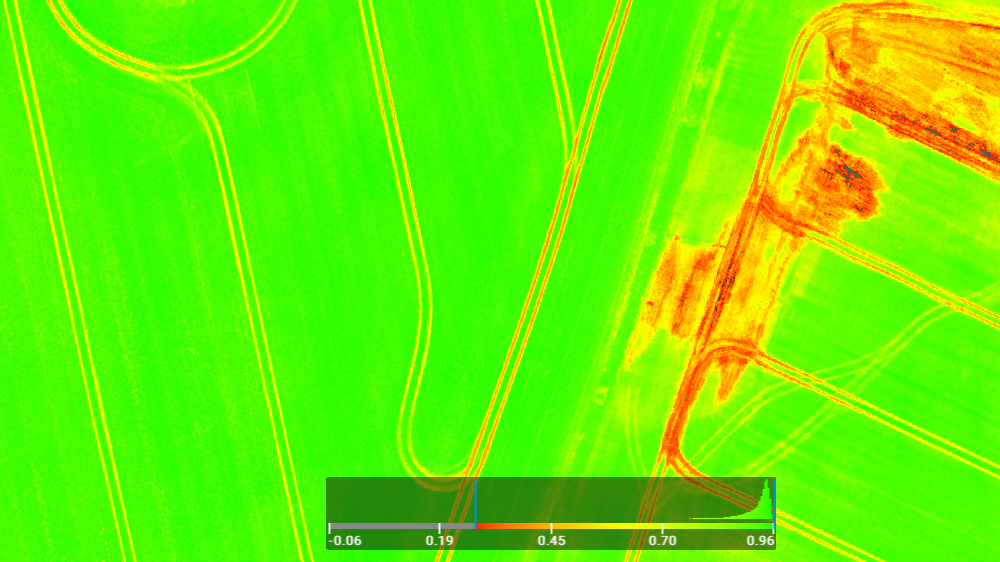
NDVI - Normalised Difference Vegetation Index
NDVI is used to measure the difference between visible and near-infrared light reflectance from crops and other vegetation to provide a standardised view of the strength of photosynthetic activity.
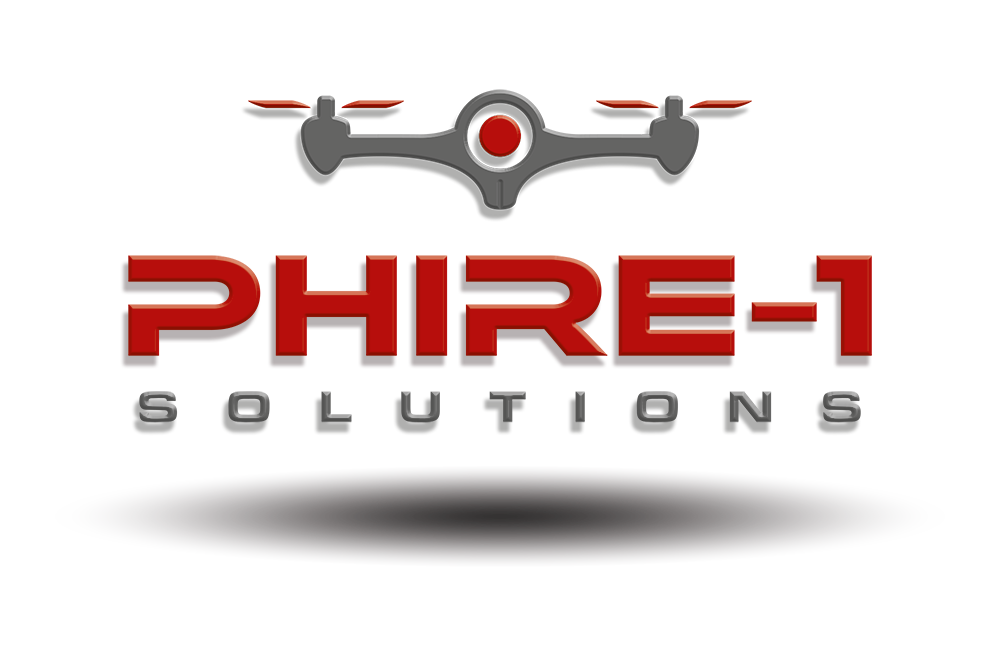 PHIRE-1 Solutions Pty Ltd (CASA.REOC.6547)
PHIRE-1 Solutions Pty Ltd (CASA.REOC.6547)

CSIRO presents the challenge of Precision Agriculture as a "Need to produce more with less". Whether it is determining the volume of pumpkins that you will need to transport to market, minimising herbicide and pesticide usage by accurately identifying areas of poor growth, or mapping drainage across fields, UAV technology is able to assist and PHIRE-1 Solutions Pty Ltd is able to help you on that journey.
Our Integrated approach is tailored to your specific needs. Typically :

NDVI is used to measure the difference between visible and near-infrared light reflectance from crops and other vegetation to provide a standardised view of the strength of photosynthetic activity.
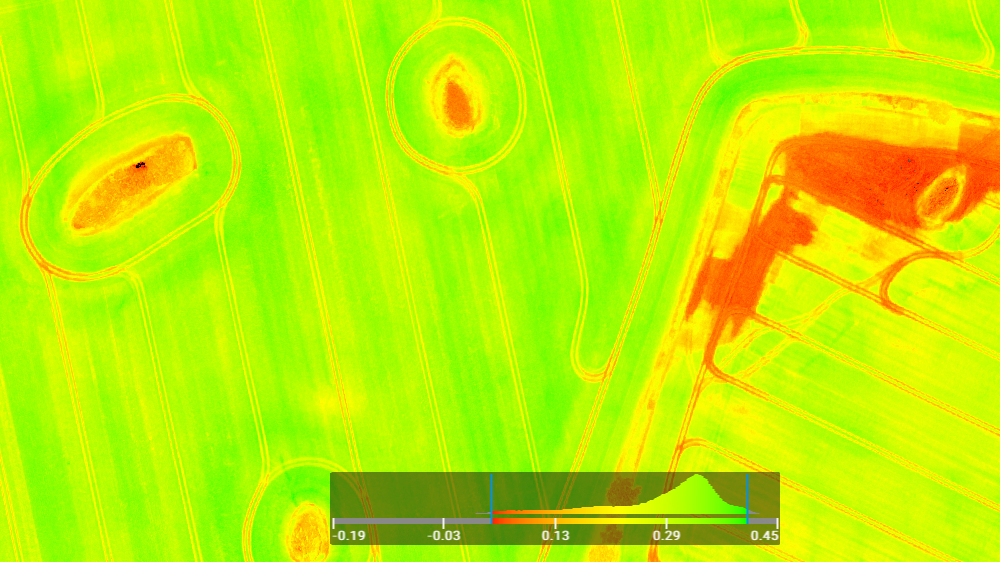
NDRE is sensitive to chlorophyll content in leaves, variability in leaf area, and soil background effects. High values of NDRE represent higher levels of leaf chlorophyll content than lower values. Soil typically has the lowest values, unhealthy plants have intermediate values, and healthy plants have the highest values. Consider using NDRE if you are interested in mapping variability in fertilizer requirements or foliar Nitrogen, not necessarily Nitrogen availability in the soil.
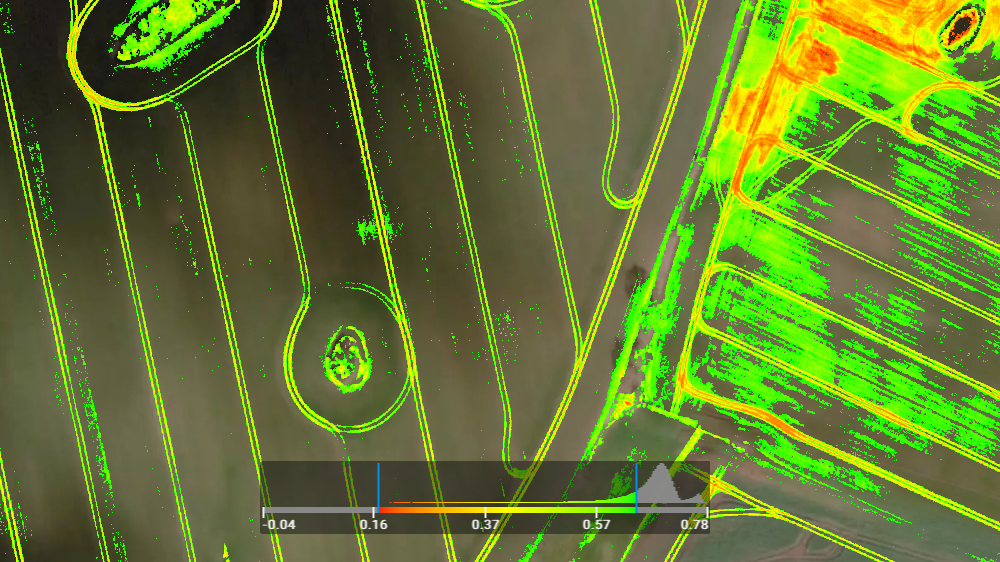
OSAVI is a variant of the Soil Adjusted Vegetation Index (SAVI). OSAVI has a soil-adjustment factor of 0.16; which results in an improved index for use where soils are highly reflective of Near Infra-Red light (For example, soils that are high in silica). OSAVI is particularly useful for stand counting of young trees in areas where there is significant soil exposure.
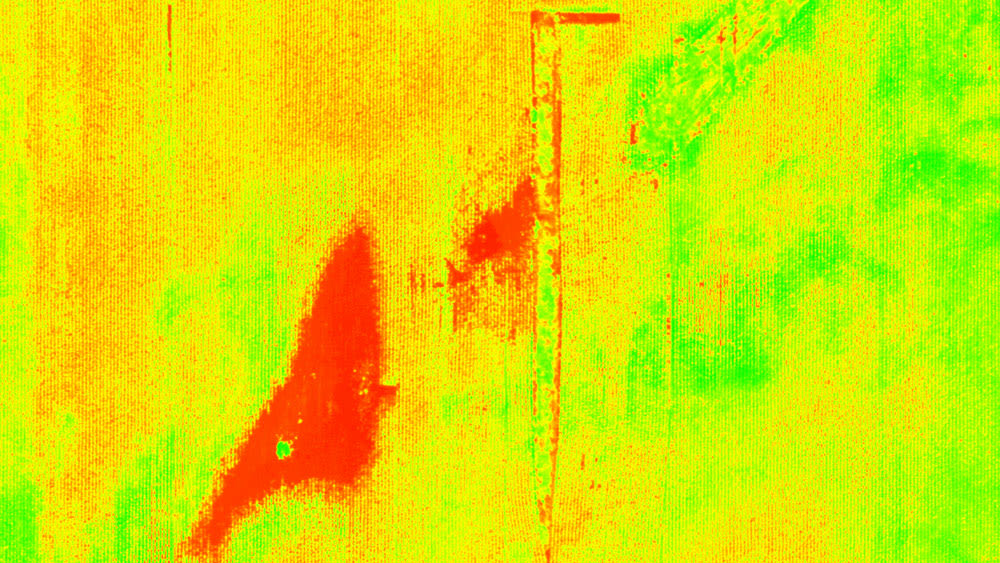
TGI is an RGB index for chlorophyll sensitivity. TGI index relies on reflectance values at visible wavelengths. It is a good proxy for chlorophyll content in areas of high leaf cover.
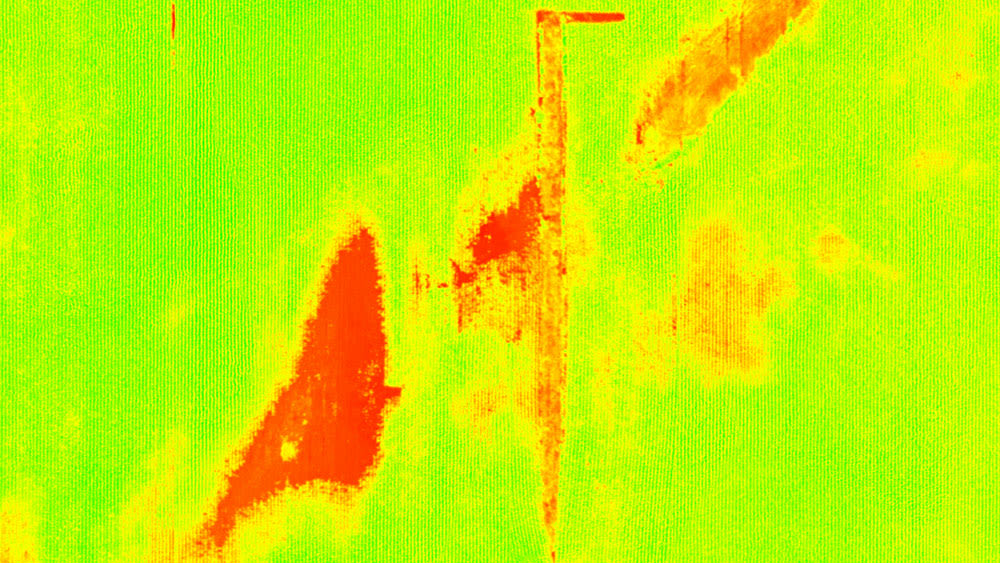
VARI is an RGB index for leaf coverage. This index is used to estimate the fraction of vegetation in an image with low sensitivity to atmospheric effects.
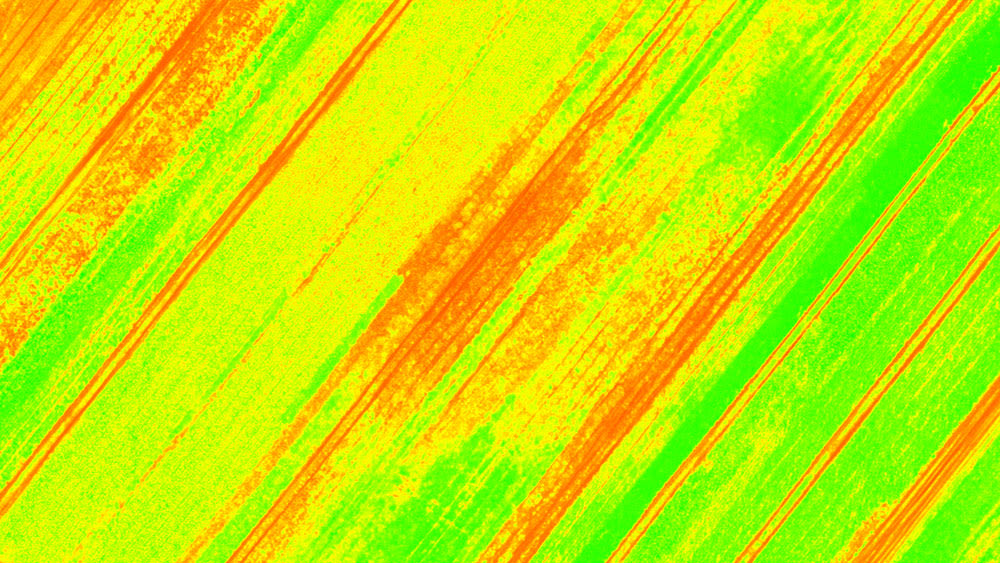
BNDVI is an index without red channel availability that uses the visible blue, for areas sensitive to chlorophyll content.
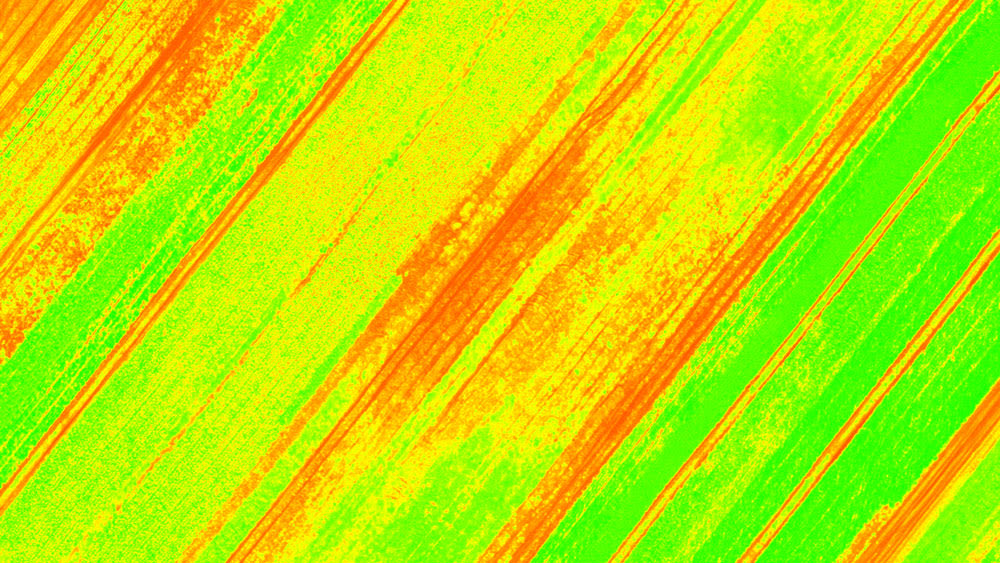
GNDVI index uses visible green instead of visible red and near infrared. Useful for measuring rates of photosynthesis and monitoring the plant stress.
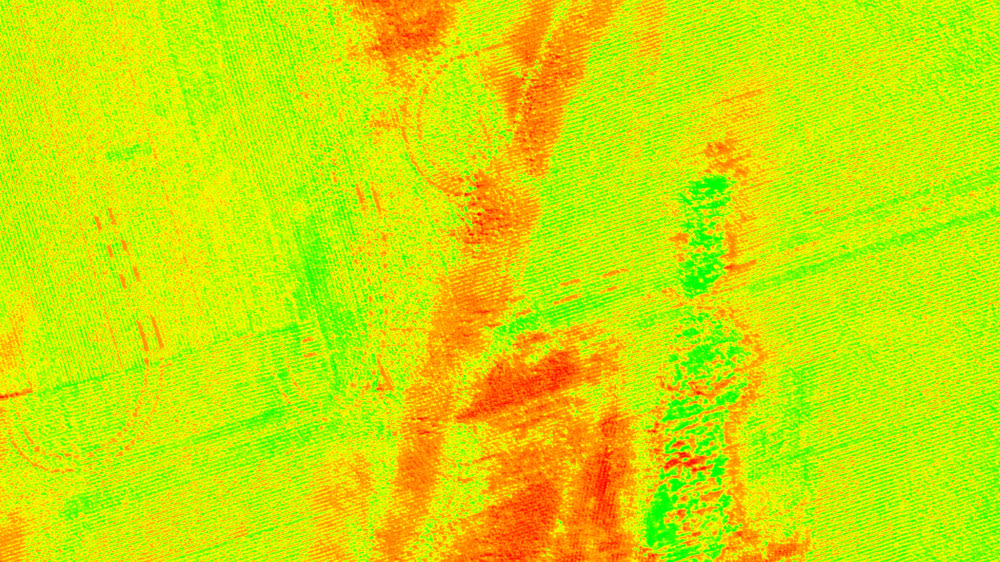
MCARI is an index used to measure chlorophyll concentrations including variations in the Leaf Area Index.
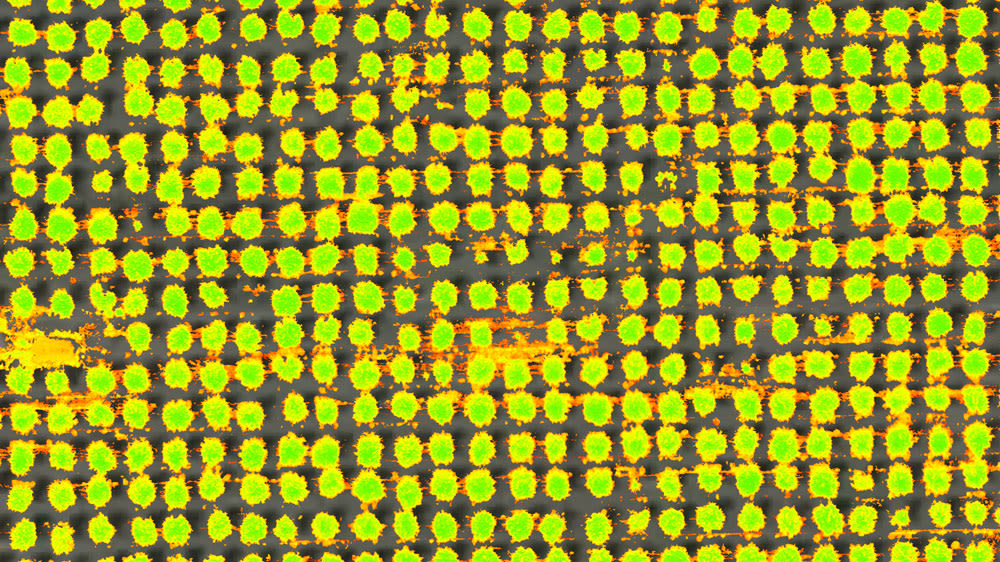
We can construct custom index masks for Soil or Vegetation from our maps for more focused results. These can also be used for counting specific items such as plants, trees, fruit etc.